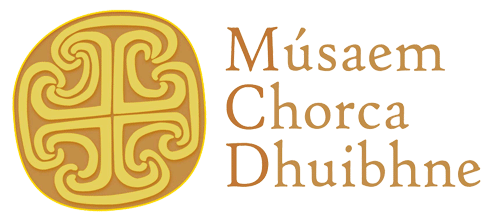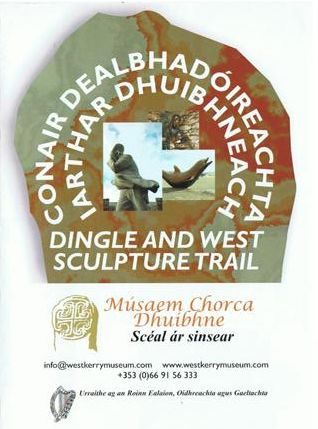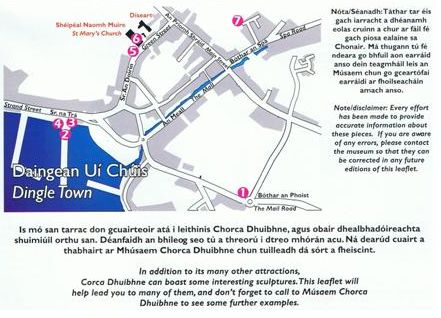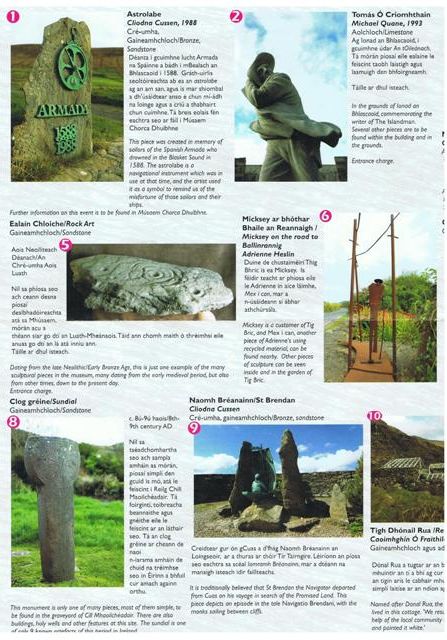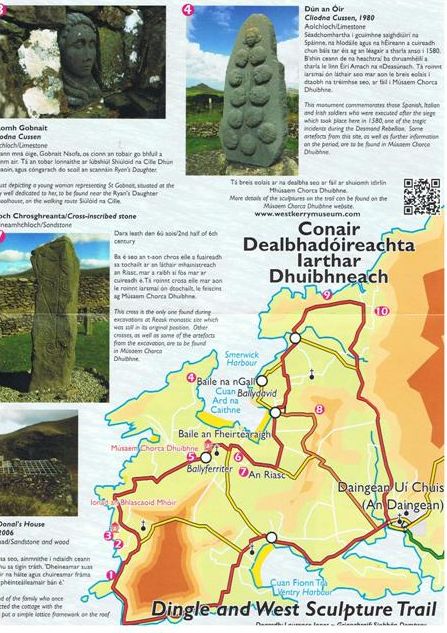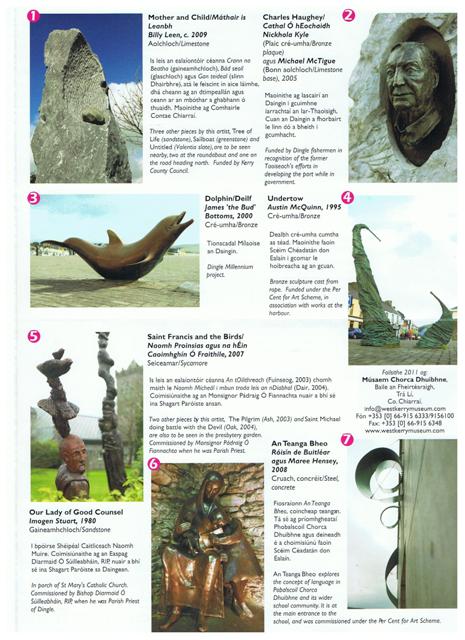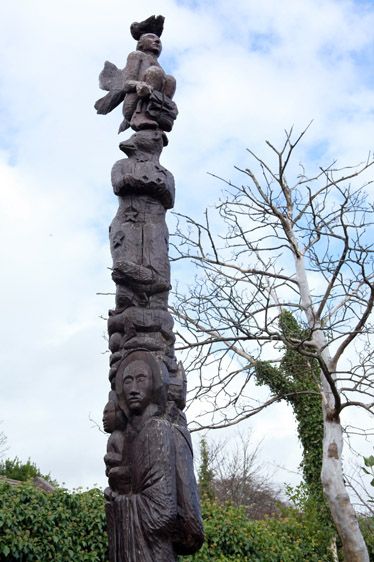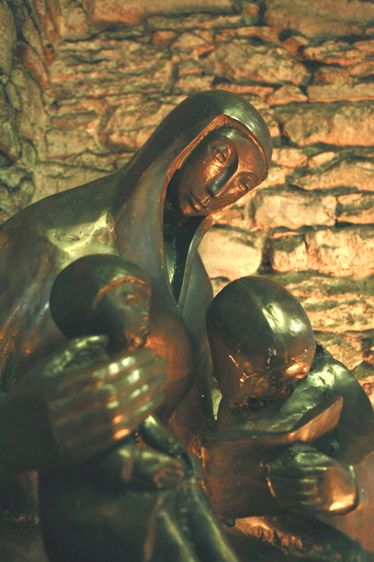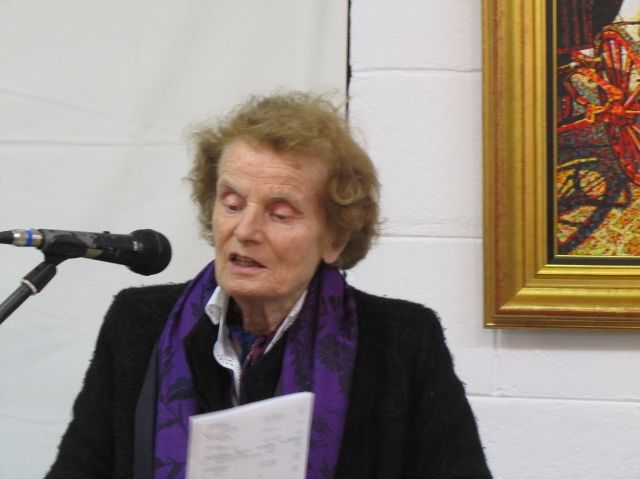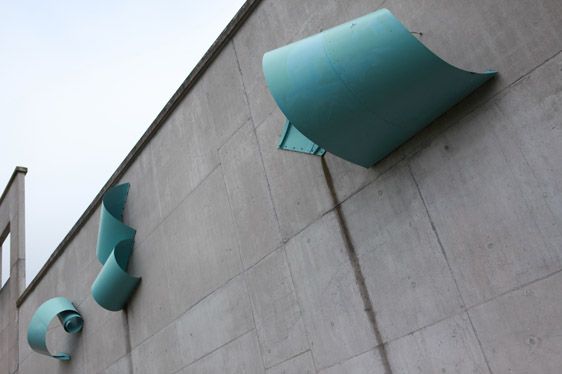DINGLE AND WEST SCULPTURE TRAIL
The full-colour ‘Dingle and West Sculpture Trail’ leaflet was launched by sculptor Cliodna Cussen during the opening of Féile na Cásca (the Easter Art Exhibition) on Easter Sunday, 8 April, 2012. This leaflet, with photography by Siobhán Dempsey (Latitude) and designed by Laurence Jones, was produced with funding from the Department of Arts, Heritage and the Gaeltacht, under their Scheme to Assist Local and Regional Museums, and is available in the museum.
While the best-known (and some lesser-known) pieces of sculpture in the area are detailed in the leaflet, there was not enough space to include all the information gathered about some of them. We hope to be able to add to that information in this page. There were also some other pieces that were not included in the leaflet for various reasons – some information about them will also be uploaded here.
The Dingle Peninsula is a very vibrant area when it comes to the arts, and new pieces of sculpture are constantly being erected, particularly around Dingle town, and many under the percent for arts scheme, in response to developments carried out by Kerry County Council. Any such works erected since late 2011 are not included in the brochure, but it is hoped to include information on each of them on this page, in due course.Introduction
For such a small geographic area, the Dingle Peninsula contains many pieces of public artwork, many commissioned/presented in recent years, but also many wonderful carvings which date back to the early medieval and medieval periods, and some go right back to prehistory. The is very fitting for an area which has always been popular with artists, providing inspiration to them, and also being the home (either from birth, or later arrival) of many. Our leaflet gives a flavour mainly of the more modern pieces, about which in many cases a lot more information was gathered than could be accommodated in the small space available on the printed page. Below you will find further information about many of the pieces. The numbering system used below is the same as that used on the leaflet.Dingle
1. Mother and Child
This piece is by Billy Leen, and further examples of his work can be seen on his website.
2. Charles Haughey
The following information is adapted from reports published in the Kerryman newspaper just before and at the time of the unveiling of the Charles Haughey plaque in August 2005, written by local reporter Ted Creedon.
The unveiling of a bronze bust of controversial former Taoiseach Charles Haughey took place in August 2005, before the annual regatta. The bronze and limestone monument was erected by local fishermen in recognition of Mr Haughey’s contribution to the development of the harbour. The two-tonne Co Clare limestone plinth was fashioned by monumental sculptor Michael McTigue, who explained at the time that the local stone is sandstone but the grey blue limestone is easier to work and will form a better contrast with the bronze bust of Mr Haughey, which was to be set into the limestone. “I have always been a die-hard Charlie Haughey man. I always admired the man. He had vision,” said Mr McTigue at the time. Mr McTigue, whose business is based in Kilnamona, near Ennis, served 10 years as a member of the Fianna Fáil National Executive. “I was contacted by former senator Tom Fitzgerald to undertake the work. My roots are firmly in the party and I was very honoured to be asked to do this,” he told The Kerryman as he worked on the stone.
The stone will be inset with an oval-shaped bronze image of Mr Haughey, which has been sculpted by Dublin-based artist Nickhola Kyle. A bronze plaque, marking the occasion, will also be attached to the face of the stone. “It’s easier to work on the stone in situ rather than before bringing it here and the balance has to be right. I’ll be fixing the bronze parts to the stone on Sunday morning. They will have dowels on the back and will be glued into holes in the stone,” said Michael.
The stone is being erected by Dingle fishermen at an estimated cost of €10,000 in recognition of the former Taoiseach’s efforts in developing the port while in power. The project had been the subject of controversy since it was made public in June 2005 and some locals, including fishermen, were bitterly opposed to it. The stone was to be unveiled by retired fishermen Paddy Flannery and Micheál ó Catháin, who were both close friends of Mr Haughey.
A description of the unveiling event from the Kerryman can be found here.
3. Dolphin
This piece is by James (Bud) Bottoms, who lives in Santa Barbara, California (a city twinned with Dingle town), and who specialises in sculptures of sea mammals. His own story of how the Dingle sculpture came about can be found here. It is too long to reproduce here – but is well worth a read!
4. Undertow
This work is by Austin McQuinn, and further details can be found about the artist here.
5. St. Francis and the Birds
This is one of 3 works by Caoimhghín ó Fraithile in the garden of the parochial house on Green Street (beside St Mary’s Church) in Dingle. The following is how Caoimhghín described the works, when asked about them while the trail was in preparation:
As you enter (the garden), the one on the left coming up the garden is Saint Michael doing battle with the Devil. On top of Michael’s head sits a Falcon; the Devil has been cast down and is upside down. On his belly there is the face of an insatiable appetite to represent his lust. The tree is oak and it was carved in 2004.
The taller of the two trees on the right hand side coming up the driveway is the Pilgrim tree. It was the first tree I carved there. The Mother and Child are going on a pilgrimage to Santiago de Compostelo represented by the scallop shell on her tunic. Above her a fox chases a rabbit. Above them the great bear in the sky guides her on her journey while Mad Sweeney (the king who was turned into half man half bird by Saint Ronan) carries her magic bag. On the very top sits the Owl who appears during daylight only to harken in the end of the world. The tree is ash and was carved in 2003.
The smaller of the three trees is Saint Francis and the Birds. It was carved in 2007.
6. Our Lady of Good Counsel
Imogen Stuart is best known in West Kerry for her bronze statue in St Mary’s Parish Church, Dingle of the Madonna Group Our Lady of Good Counsel which was commissioned by Bishop Diarmaid ó Súilleabháin (RIP)in 1980 when he was Parish Priest of Dingle. The statue in the porch of the church represents The Virgin reading to two children the prophecy of Isaiah foretelling the coming of her Son – “óir rugadh leanbh dúinn, tugadh mac dúinn; tá an tiarnas ar a ghualainn, agus is é ainm atá air: “Comhairleoir iontach, Dia láidir, Athair síoraí, Prionsa na síochána”. Isaiah 9:6.
Recently (2010) the statue was re-placed on a plinth in St Mary’s Porch. The stone was quarried in O’Sullivan’s Quarry, Minard, the quarry which originally provided the stone for St Mary’s Church.
7. An Teanga Bheo (the living tongue {or language})
This large artwork, at the entrance to the Pobalscoil (Community School) in Dingle, came about through collaboration between the artists, Róisín de Buitléar and Maree Hensey, and the students and teachers in the school, working together to provide inspiration. As quoted on the web site which describes the work:
‘The work consists of large scale abstract sculpture which is mounted on both faces of the spine wall at the entrance to the school. The forms are drawn from investigation of the schools identity while working as artists-in-residence with the students and the wider school community. Investigations covered expression, sentiments and communication through the Irish language, incorporating sounds and rhythm of the language. Wide ranging discussions on cultural heritage were also facilitated.
The spine wall is a structure which forms a boundary for the school building; it protects and marks its outer limits. The sculpture weaves its way through and along this architectural feature. This work is a visual interpretation of how the Irish language is interwoven in the community and how it is influenced by what is happening inside the school building and outside in the locality. The continuous nature of the form illustrates how language is passed from one person to another. The rise and twists of each individual element can be seen to describe undulations and rhythm of speech.
On one extreme of the wall, a delicate curled form seems to unfold and to be barely attached to the wall, these delicate forms remind us of the tenuous position a minority language can have in society. The colour was inspired by a student field trip to the Conor Pass which focused on collecting information directly from the landscape.The soft contours of this sculpture announce its presence at the entrance to the building. The sculpture appears to transcend the wall and emerge on the opposite face in a rolling gentle movement. As the individual passes through the gate, the continuous form reveals itself in the side elevation of the wall and entices the viewer to continue his path to face the sculpture from the western side at the student entrance to the building.’
A photographic essay was produced on the genesis of the project, which can be seen here. Further images of the work can be seen here.
The budget for this artwork, which was commissioned and created during 2008, was in the €35000 – €70000 range.
Further information about Maree Hensey (b. 1962) can be found here.
Further information about Róisín de Buitléar (b. 1963) can be found here. Another example of Róisín’s work in this area is a large stained glass window (the largest in a secular building in the country) in Ionad an Bhlascaoid Mhóir, in Dún Chaoin.
